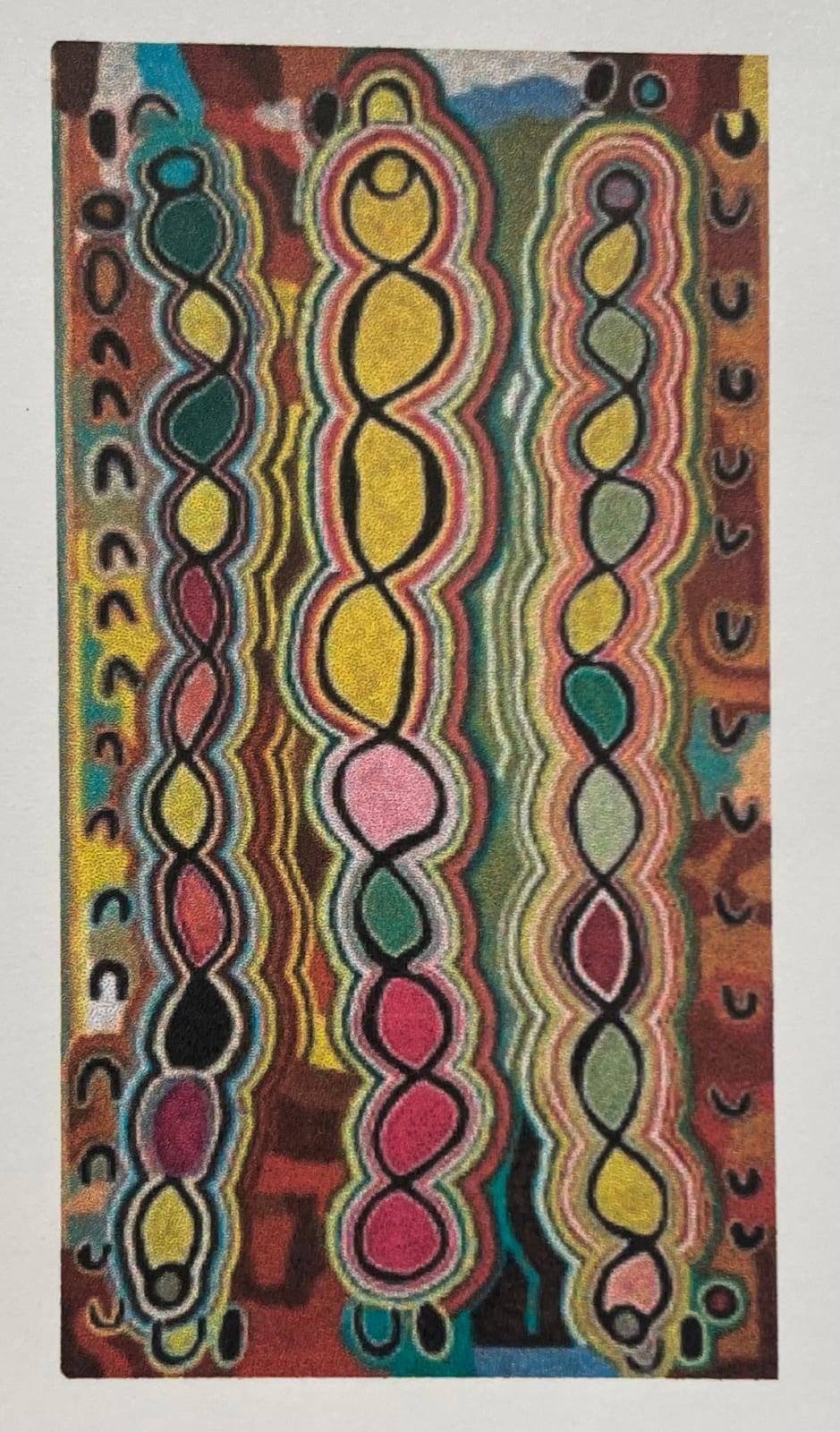Judy Napangardi Watson
Snake Vine, 1995
synthetic polymer paint on canvas
203 x 109 cm
80 x 43 in
80 x 43 in
Auction: The Rod Menzies Estate, Indigenous and Oceanic Art Collection, Part I Provenance: Kimberley Art, Vic Cat No. KAJW 04/95 Private Collection, Vic Lawson-Menzies, Sydney, NSW, 30 May 2006, Lot...
Auction: The Rod Menzies Estate, Indigenous and Oceanic Art Collection, Part I
Provenance:
Kimberley Art, Vic Cat No. KAJW 04/95
Private Collection, Vic
Lawson-Menzies, Sydney, NSW, 30 May 2006, Lot No. 151
Menzies Estate Collection, Vic
Story
Warlpiri artist Judy Napangardi Watson was born in 1925 at Yarungkanji, Mt Doreen Station. She grew up living a traditional lifestyle, travelling extensively with her family on foot across their Ancestral country on the border of the Tanami and Gibson Deserts in the Northern Territory. Long periods of time were spent living at Mina Mina and Yingipulangu, country rich in food sources and Jukurrpa (Dreaming).
Judy began her artistic life in teh mid 1980s, developing her own unique style after initially learning to paint from her elder sister, Maggie Napangardi Watson. The sisters painted alongside one another for several years at the Warlukurlangu Art Centre, which has become known for its many female artists, vibrant use of colour and large collaborative projects.
The Snake vine (Ngalyipi) is an important ceremonial item used to bind branches and feathers to the dancers' bodies. It grows on and around gum trees, and in ceremonial contexts is associated with the initiation of young Japangardi and Japanangka men. It is also used to make shoulder straps for carrying water and food containers, as well as for medicinal purposes. The plant can be made into a tourniquet for curing headaches and as a bandage for cuts and sores.
Provenance:
Kimberley Art, Vic Cat No. KAJW 04/95
Private Collection, Vic
Lawson-Menzies, Sydney, NSW, 30 May 2006, Lot No. 151
Menzies Estate Collection, Vic
Story
Warlpiri artist Judy Napangardi Watson was born in 1925 at Yarungkanji, Mt Doreen Station. She grew up living a traditional lifestyle, travelling extensively with her family on foot across their Ancestral country on the border of the Tanami and Gibson Deserts in the Northern Territory. Long periods of time were spent living at Mina Mina and Yingipulangu, country rich in food sources and Jukurrpa (Dreaming).
Judy began her artistic life in teh mid 1980s, developing her own unique style after initially learning to paint from her elder sister, Maggie Napangardi Watson. The sisters painted alongside one another for several years at the Warlukurlangu Art Centre, which has become known for its many female artists, vibrant use of colour and large collaborative projects.
The Snake vine (Ngalyipi) is an important ceremonial item used to bind branches and feathers to the dancers' bodies. It grows on and around gum trees, and in ceremonial contexts is associated with the initiation of young Japangardi and Japanangka men. It is also used to make shoulder straps for carrying water and food containers, as well as for medicinal purposes. The plant can be made into a tourniquet for curing headaches and as a bandage for cuts and sores.
